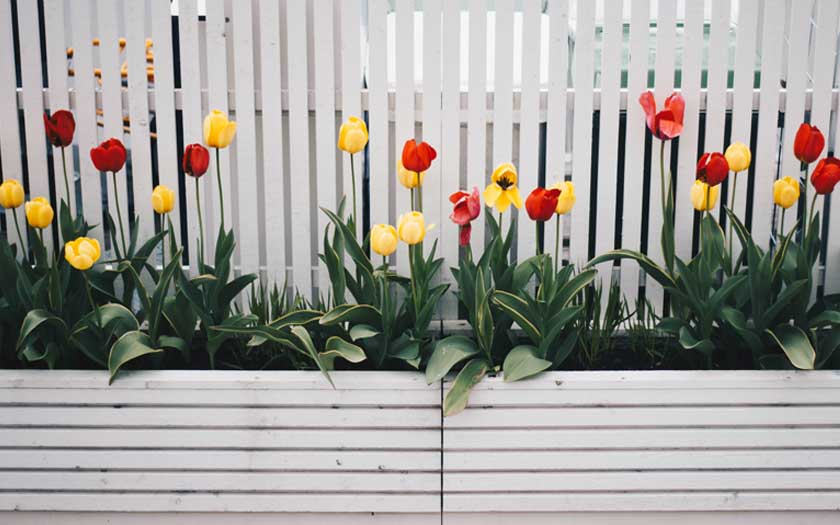Last Updated on November 21, 2022
Indoor flowering bulb plants bring a touch of Spring to any room during the winter months. Learn how to take good care of your indoor bulb plants here.

Indoor Bulb Plant Care Made Simple
I don’t know about you, but whenever I see beautiful bulb plants like tulips and daffodils on display, I think of Spring! Especially after the holidays, when winter is settling in, and I’m ready for a splash of color!
If you are thinking along these same lines and want to pick up a bulb plant or two to brighten up your surroundings, you might be wondering…
What Bulb Plants Do Best Indoors?
The most common bulb plants sold by retail florists for indoor enjoyment are tulips, daffodils, and fragrant hyacinth plants. They are all hardy bulbs that bloom naturally in early spring.
Combination planters, also known as bulb gardens, are also very popular. While many of these are usually planted with those same spring bulbs, they might also include several smaller plants.
I’ve frequently seen grape hyacinths, iris, freesia, tete-a-tete daffodils, and crocus plants included in some of the larger bulb gardens we’ve sold.
Usually, they are planted to provide beautiful blooms that continue to flower over several weeks.

All spring-flowering bulbs are planted in the fall and forced so they may be enjoyed during winter.
Flowering Bulb Plant Care Tips
Proper care of each of these different types of bulb plants is very similar and will help to extend the bloom time.
Watering
Keep the soil moist but not saturated. Water thoroughly when the soil surface is dry to the touch, making sure to drain off any excess water.
Temperature and Light Requirements
Most potted bulbs and bulb gardens will flower under a wide range of light conditions. While blooming, display them in a cool spot with bright, indirect light.
Bulb plants do best in cool temperatures, 60°-65°F (15°-18°C) during the daytime. Cool night temperatures (50°-60°F/10°-15°C) will help to extend the flowering period when kept indoors. Avoid excessively hot, cold, and drafty areas.
Fertilizing
Potted bulbs don’t need to be fertilized during the blooming period because the bulb holds everything the plants need nutrient-wise.
What To Do With Indoor Bulb Plants After Flowering
If you want to extend the enjoyment of your potted bulbs for years to come, keep them well-lit and moist after flowering. Cut off the stems and leaves when they are no longer green.
Since these hardy bulbs are forced inside greenhouses, they should be moved from your house and planted in your garden mid-spring.
Plant them in a sunny area with well-drained soil. The time it will take to rebloom depends on your local climatic conditions and the size of the bulbs.

I hope you enjoyed these quick tips on caring for your indoor potted bulbs or bulb garden. As you can see, there’s no green thumb required either!
Want More Care Tips Like This?
If so, sign up here. And don’t worry, you won’t get any promotional emails from me. I don’t send any. It’s not my style.
We will only use your information to send you our blog updates. You can change your mind anytime by clicking the unsubscribe link at the bottom of any email you receive from us. You can find details about our privacy practices here.
You can also pick up more tips by following me on social media.
Finally, if you think these tips will help others, please share this post with your friends.
Til next time,

